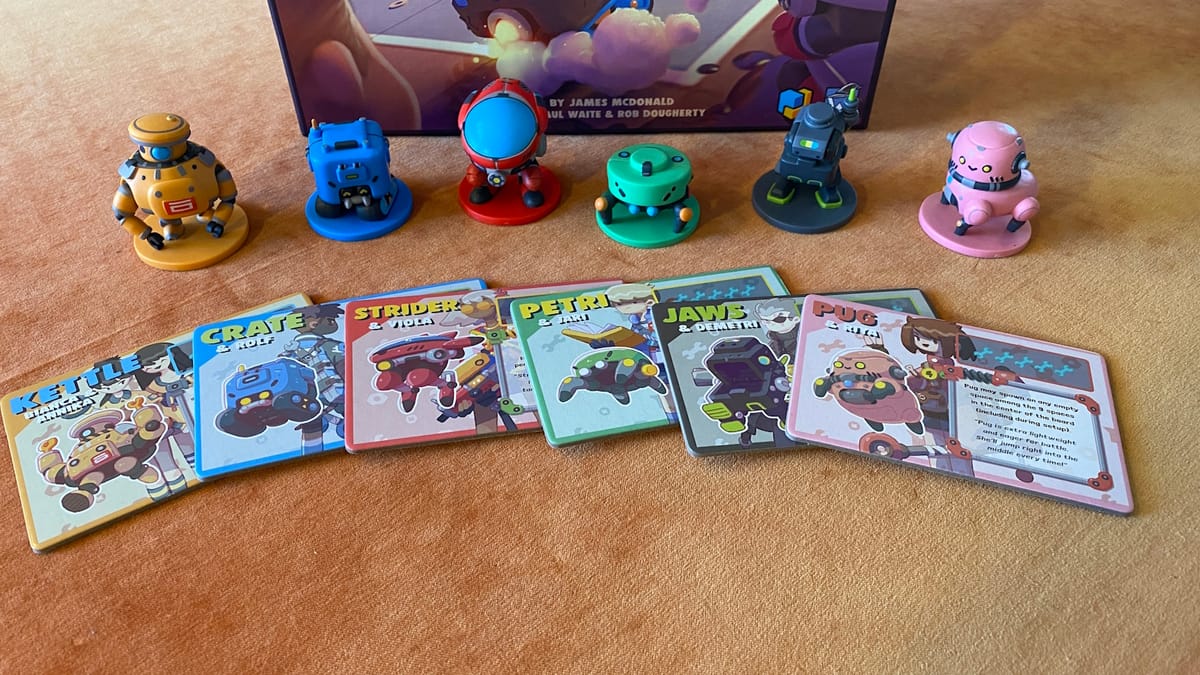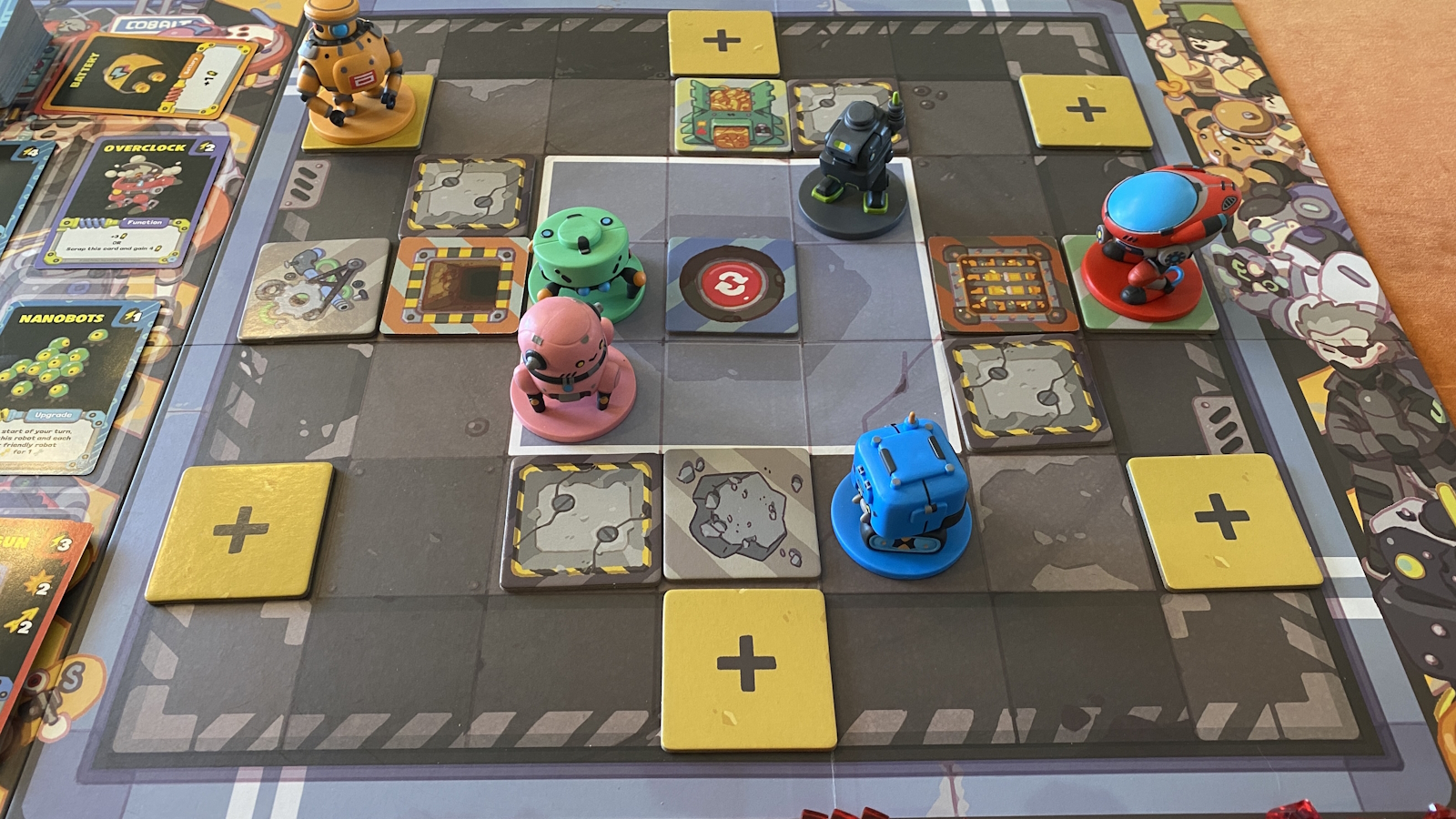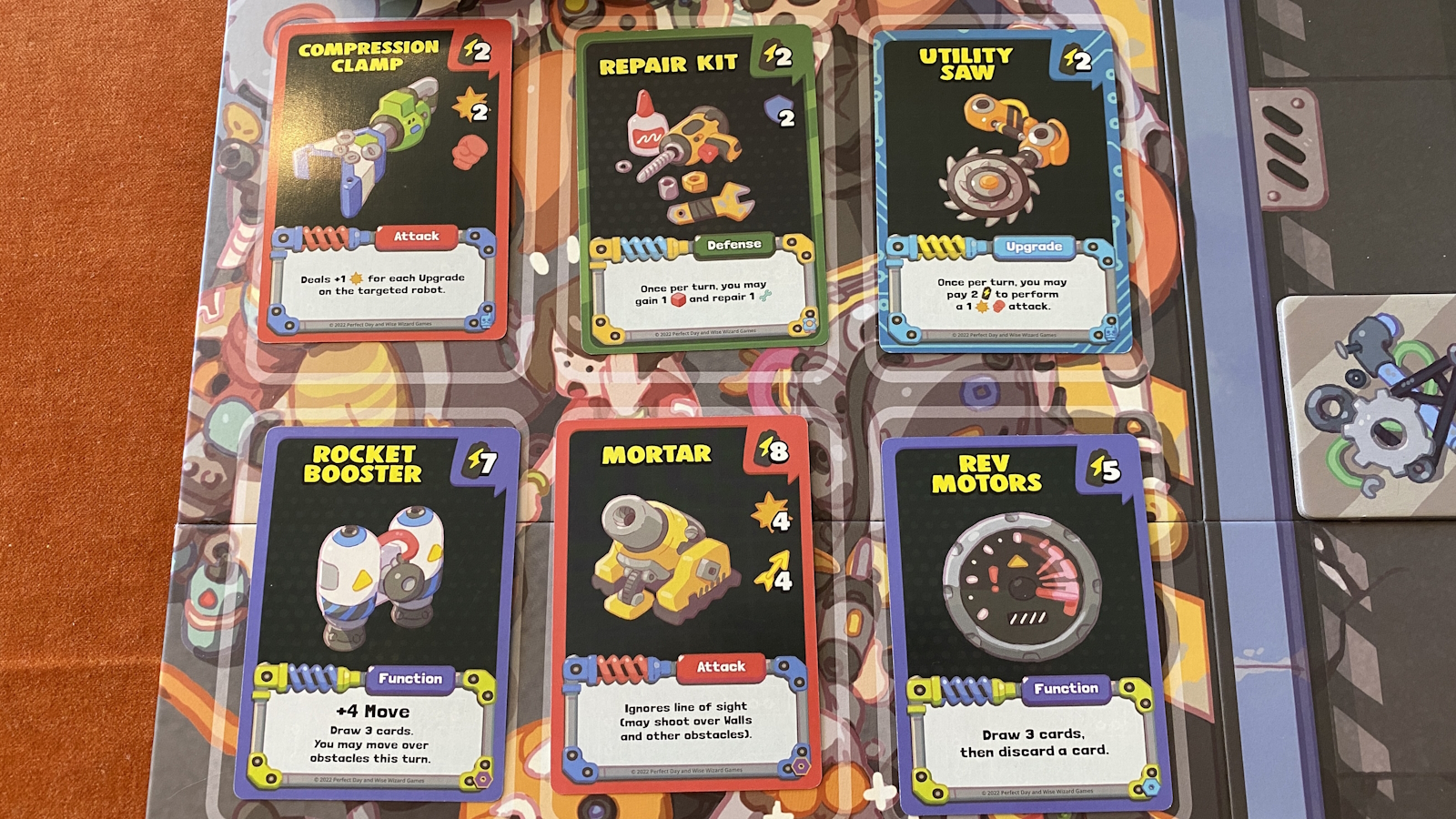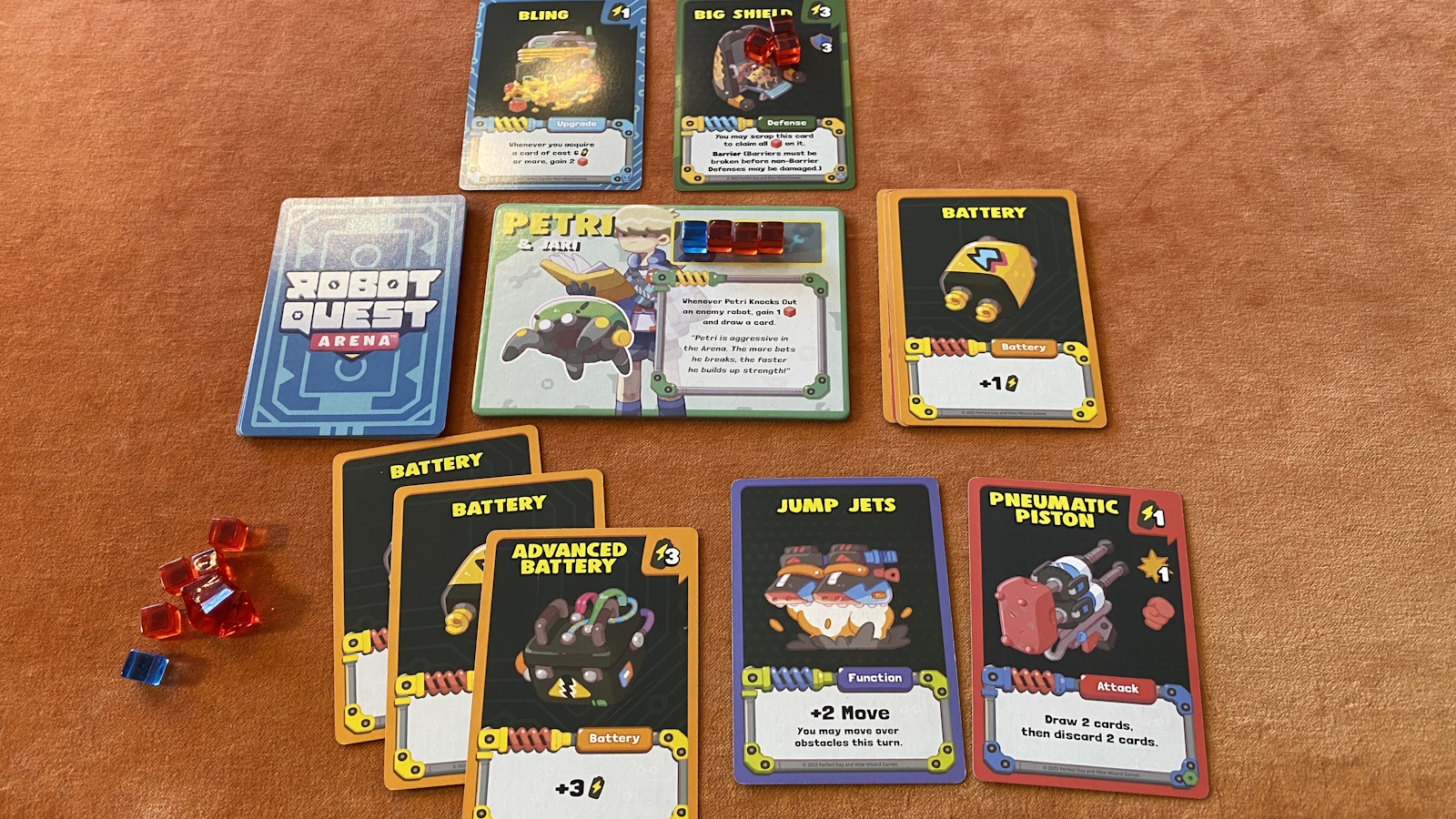
Robot Quest Arena combines deck building with tactical arena combat. Matches can either be free for all or teams, with the goal being to have the most victory points after a certain number of robot deaths. Victory points are primarily earned through dealing damage to opponents.
Players use energy that they generate from cards to either move around the arena or purchase more powerful cards. Attack cards are used to deal damage to opponents. All damage dealt is converted directly into victory points, with a little bonus for landing the finishing blow. Robots respawn at the beginning of the player’s turn, so getting knocked out never removes you from the action.

Six robots battle it out.
Theme and Art
The players represent robot techs controlling their adorable robots who are competing against each other in an arena battle for fame and glory. The side of the game box has bios for each duo and the rulebook adds even more flavor for each bot. The art style is very cutesy and well drawn, with the rule book being filled with random doodles. Each card also features its own unique art giving the techs and robots a lot of personality.
Components
The robot miniatures are absolutely amazing and are easily some of the best I’ve seen in any game. They are solid with a soft feel, finely detailed, and extremely colorful making them the centerpiece of this game.
The board and tiles are thick and of good quality, with the cards being durable as well. However, this can make shuffling a bit hard. The board tiles are distinct, but don’t have any iconography, so your first few games will require referring to the rules to see what they do.
Thankfully, the rulebook is very clear with detailed explanations and examples. There is also an extensive glossary and a link to an FAQ, meaning I never had any confusion about the rules.

A wide range of options in the market.
Gameplay
Deck building is a fun mechanic and Robot Quest Arena provides a good implementation of it. Decks can power up quickly, with players being able to spend power to move as well as purchase cards, making sure that no turn feels wasted.
There are multiple strategies players can go for during their turn. They can try to make their deck powerful quickly in order to overwhelm their opponents in the late game, or they can immediately buy cheap attack cards to start racking up the points. These are just some of the various methods of how players might improve deck power and consistency.
Of course, your options might be limited by what is available in the market or what tiles are available in the arena. You can try and sit on a tile to get more power or to remove cards from your deck, but you could also hang around the middle of the board to get a victory point each turn. Be wary though, other players may decide to interfere in your plans.
There are multiple ways players can interact with other robots in the arena. In addition to attacking directly, you can push them onto dangerous tiles, into walls, or even into other robots. Attacks can be either melee or ranged, with certain obstacles blocking line of sight. Do you go for an in-your-face strategy, or try to maneuver and pick them off from a distance?
Expansions
Robot Quest Arena establishes itself as a very different game depending on two main factors. Each of the two expansions currently available include one new robot and a set of cards that get shuffled into the market deck. In the core game, cards in the market either produce energy, attack, or have a one time effect. However the Kettle expansion adds armor cards, which stay next to your robot and absorb a set number of hits before being discarded. The Jaws expansion instead adds upgrade cards that immediately go next to your robot and have permanent effects.
Including these expansion cards not only adds more complexity to the game, they also slow it down. Instead of just attacking, you might be buying these new cards to help make you into a late game powerhouse. Armor in particular is guaranteed to lengthen the game with the only real way for the game to end is to have robots be eliminated.

Petri is powered up and ready to attack.
Player Scaling
At four players, the game is a good brawl. Not too crowded, but there is always someone to attack. If a player is hiding in a corner, then there are enough opponents to hunt them down.
At three players, there is a lot more hiding and building up. Why open yourself up to attack when you could power up and let the others fight? Why soften up player A just to let player B swoop in for the kill?
At five or more players, the game becomes chaotic. There’s no time to power up your deck for the late game. The arena is packed and robots are being destroyed left and right, bringing a swift end to the game.
When playing with only two players, each player will control two robots with a single deck. Each card played gets assigned to one of your robots. This makes it very easy to manage, but causes some other issues. Energy and cards are universal, so you can have one robot just sit on a special income tile while the other goes to fight.
Playing with teams instead of free-for-all can change up the way the game feels as well. It adds a nice coordination aspect to the arena, trying to work best with your team. It can also help make large games feel less chaotic.
Conclusion
Robot Quest Arena will appeal to a younger audience with its cute aesthetic, but has enough depth to keep more dedicated gamers entertained, especially with expansions. Despite always having the same mechanics, it is a very different game based on which expansions you use and how many players you have. You may find that you enjoy some setups while disliking others.
Robot Quest Arena
Great
From strategic head-to-head action to group free-for-all, everyone should be able to find a way to enjoy Robot Quest Arena. Just make sure your setup suits your desire, or you could find yourself not having as much fun as everyone else.
Pros
- Excellent robot miniatures
- Fun, fast-paced gameplay
Cons
- Doesn’t scale smoothly
- Can feel chaotic with larger player numbers